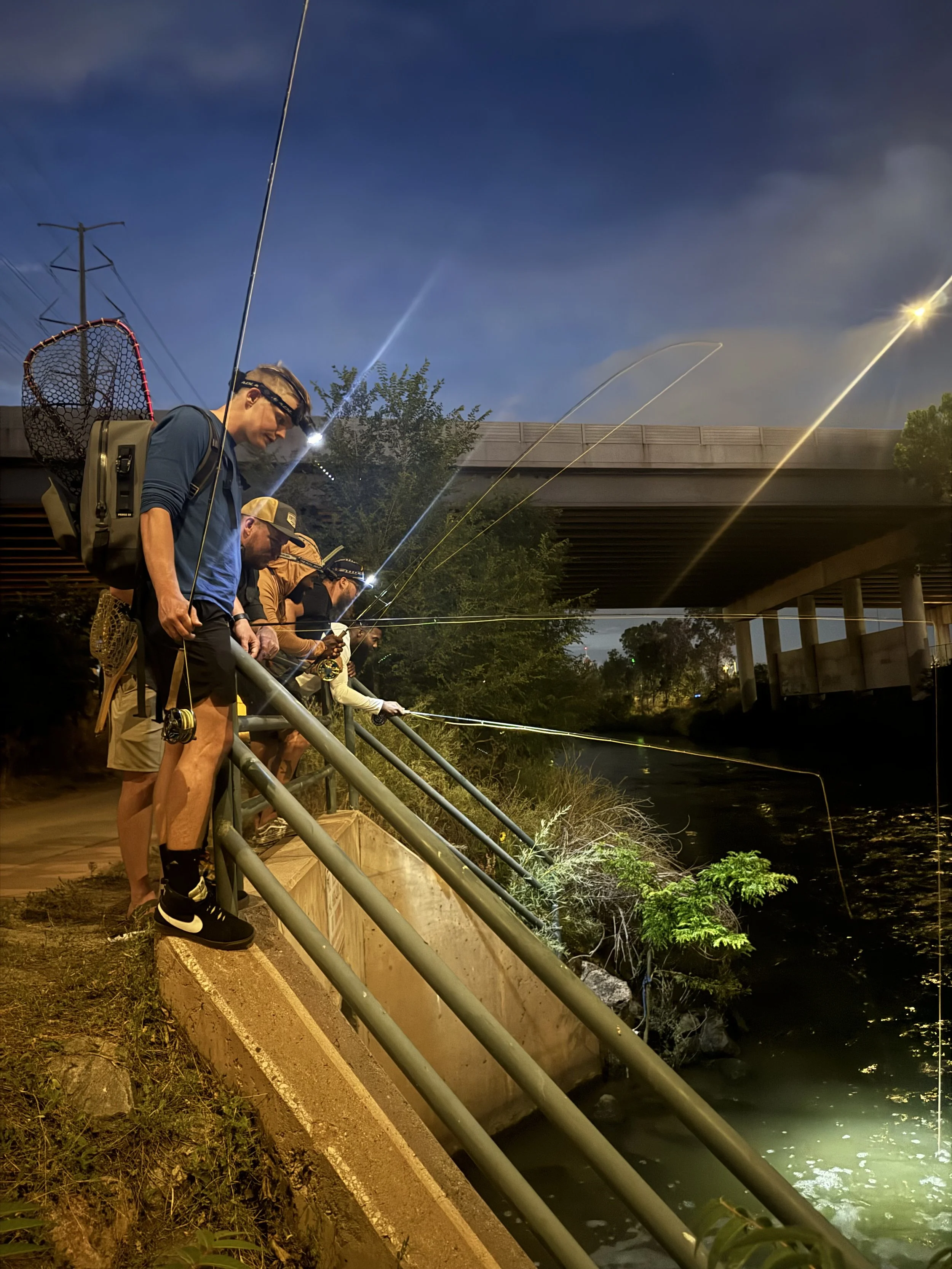Denver Water already sucks 60% of the annual flows from the Fraser River, and they now want to take more: another 15%. Sign the Defend the Colorado petition today and tell Denver that before they take more water, they need to protect the Fraser River. Tell Denver Water: Don't Suck the Fraser River Dry!

If you see a lost-looking trout walking the streets of downtown Denver in coming weeks, don’t be alarmed. He’s just looking for some water. Any water.
He urgently needs your help.
We recently filmed this trout’s sad dilemma. Left high and dry in the Fraser Valley, where Denver Water is sucking the life out of the Fraser River and its tributaries, our refugee trout hitchhiked to Denver to try to find out who moved his water and where he can get a few drops.
Check out the short video– it’s a lighthearted effort to highlight a serious problem: Denver Water is diverting the Fraser River to death.
You can make a difference by sending a message to Denver Water: sign the petition telling Denver Water to protect – not kill – the Fraser River.
You might not know that much of Denver’s water comes from across the Continental Divide, in Grand County, where the Moffat pipeline each year drains 60 percent of the Fraser River’s annual flows, leaving dozens of tributaries sucked completely dry. Denver Water’s proposed expansion of that pipeline would take another 15 percent of flows, leaving an already damaged river on life support.
It’s not just trout and wildlife at risk—our mountain towns and state tourism economy are also threatened. If you love to fish, ski, raft, hike, camp or otherwise recreate in the mountains, this hits you where you live.
We simply can’t keep sucking the lifeblood out of the Fraser and expect it to remain a living river.
If Denver Water is to move forward with the Moffat expansion, they must take steps to ensure it is done in a way that won’t destroy the Fraser River. For months, a coalition of conservation organizations, landowners, and recreation businesses have been calling on Denver Water to take a few responsible, cost-effective steps to protect the Fraser:
- ensure healthy “flushing” flows in the river to clean out silt and algae.
- avoid taking water during high water temperatures, when trout and aquatic life are vulnerable.
- monitor the river’s health and take action as needed to prevent further declines.
We’ve presented these concerns to Denver Water, but so far they’ve been unwilling to work with us to adopt this common-sense package of protections.
This is where you come in. Denver Water will listen to their customers. We need Denver-area residents—and anyone who cares about Colorado’s rivers and wild places—to tell Denver Water that you want them to “finish the job” of protecting the Fraser River.
Please—go right now to the Defend the Colorado webpage to sign a petition asking Denver Water board members to protect the Fraser. We know they will respond to public pressure—but that means you need to take a few minutes and sign the petition. It will make a difference for the Fraser River and for our homeless trout, but only if you act now.
Denver Water won't act if they think Coloradans don’t know enough or care enough to demand a higher level of river stewardship.
So do something good for our rivers today. Sign the petition and tell Denver Water: don’t suck—protect the Fraser River.










